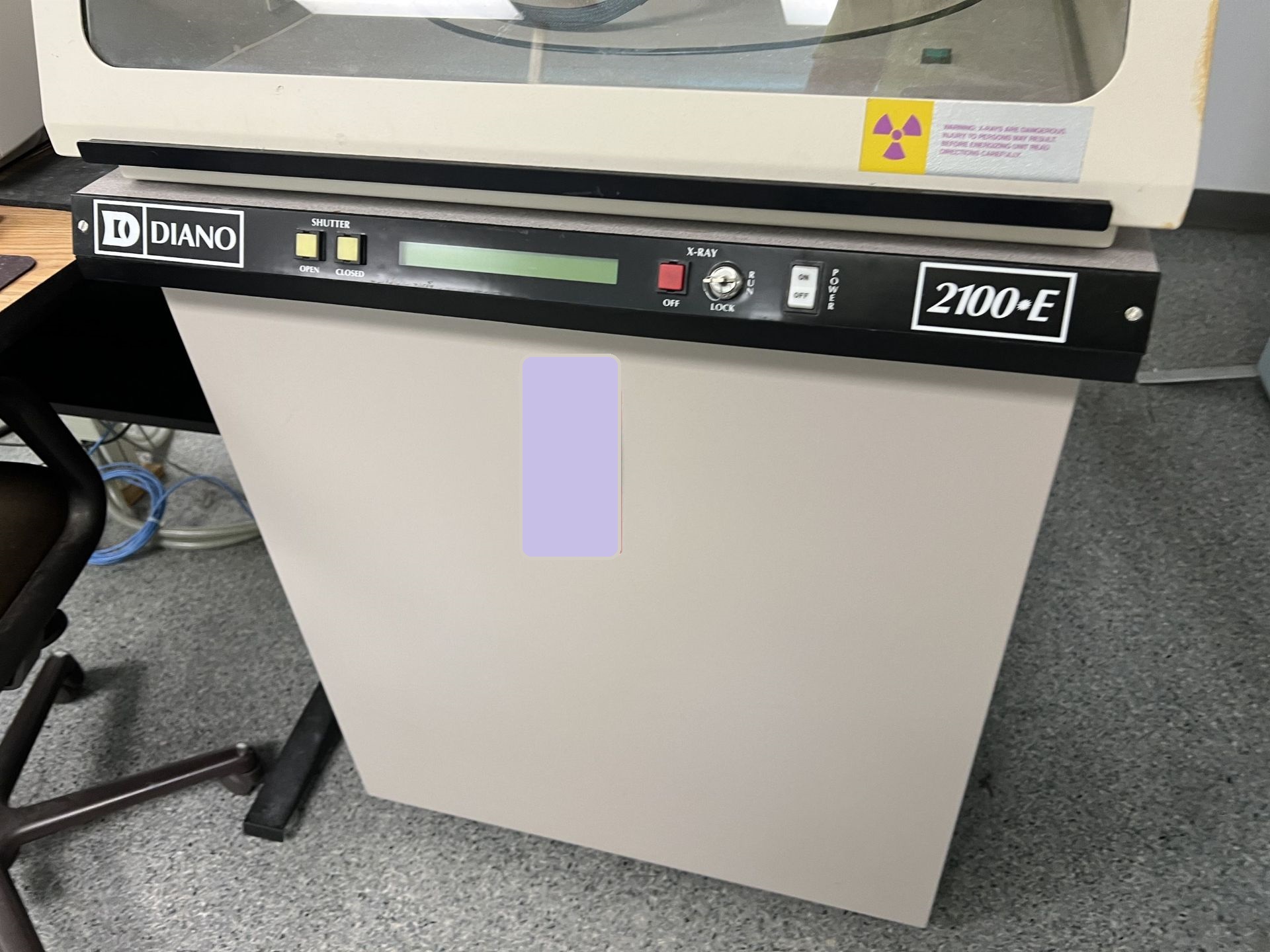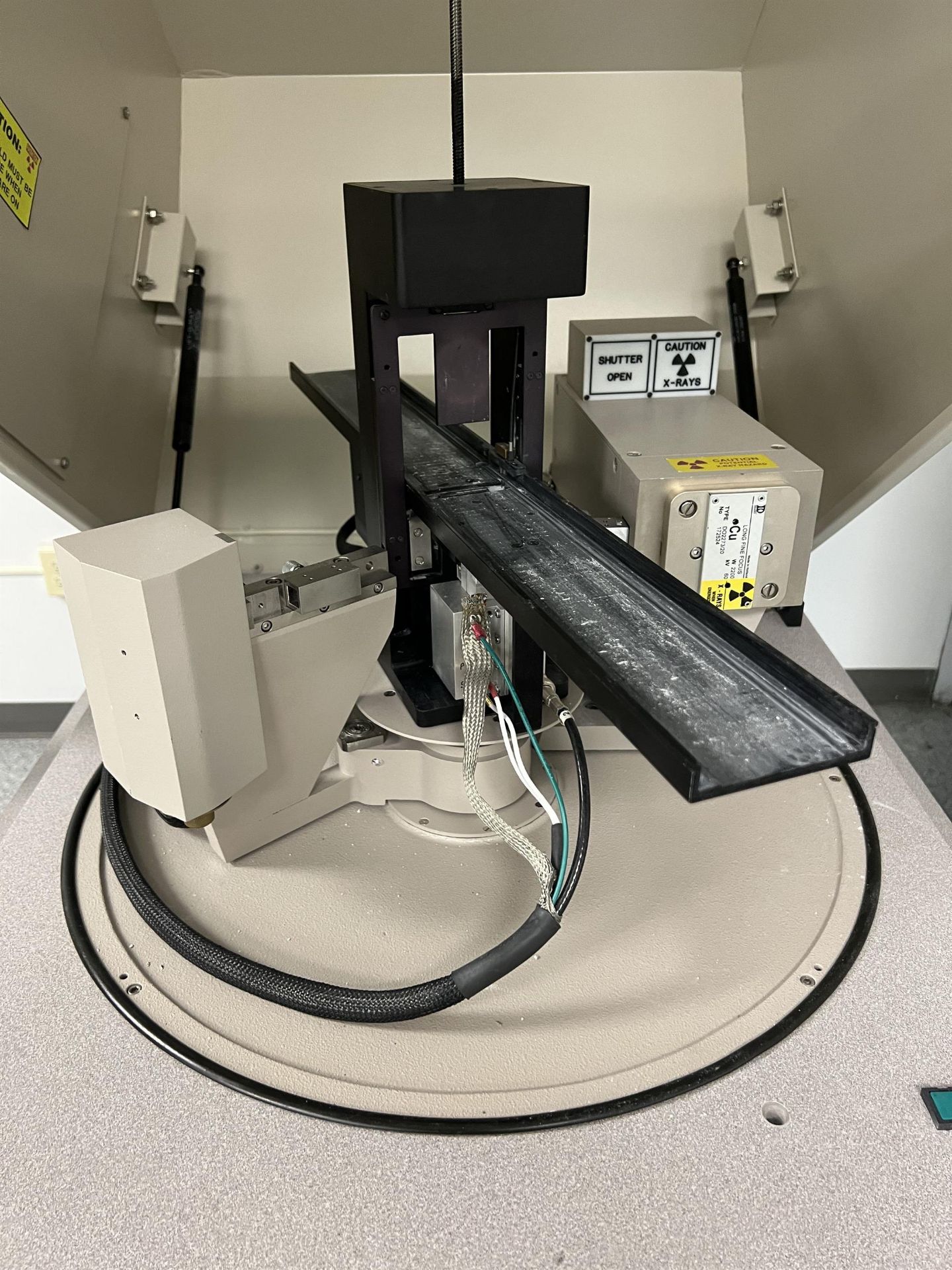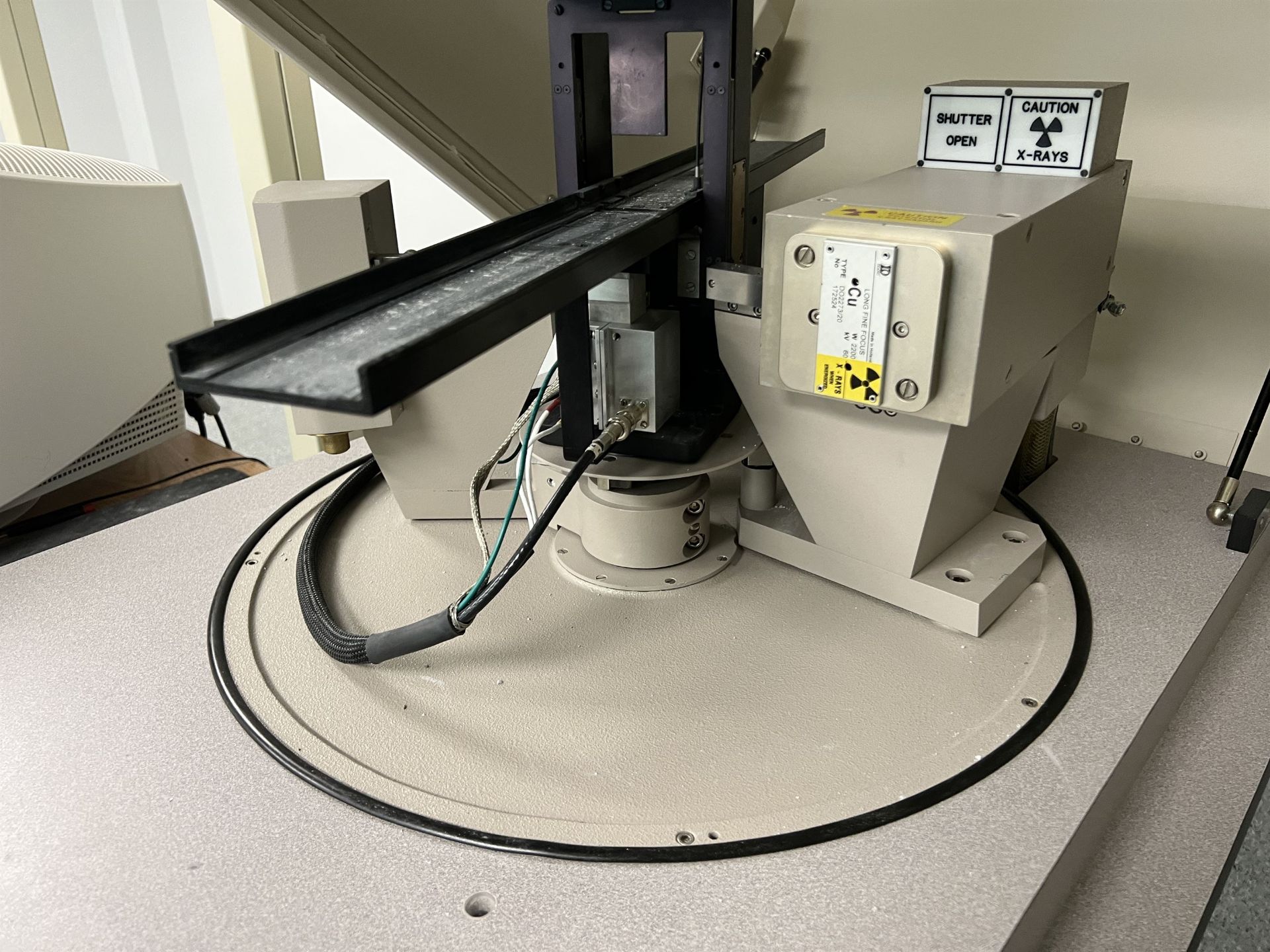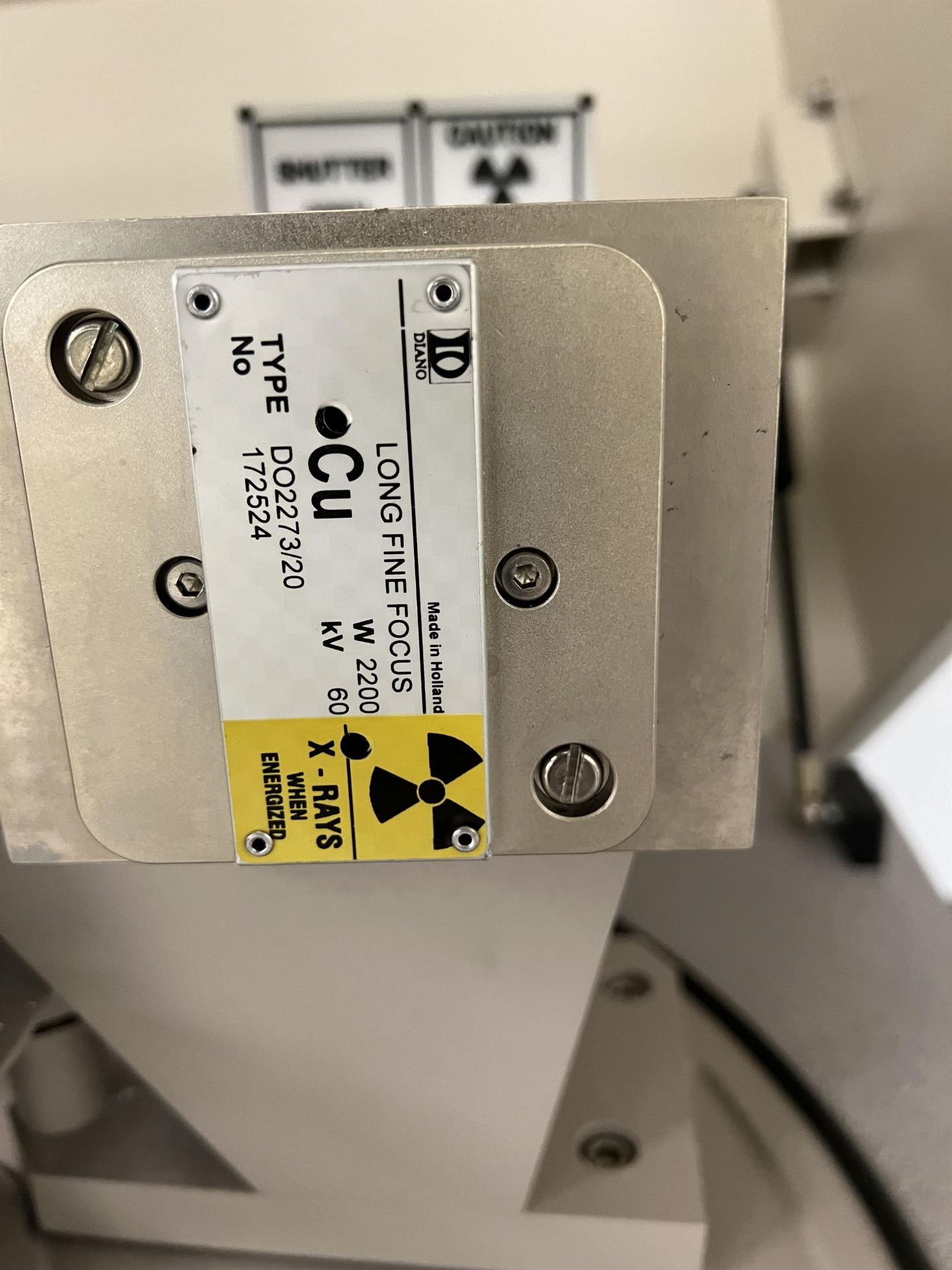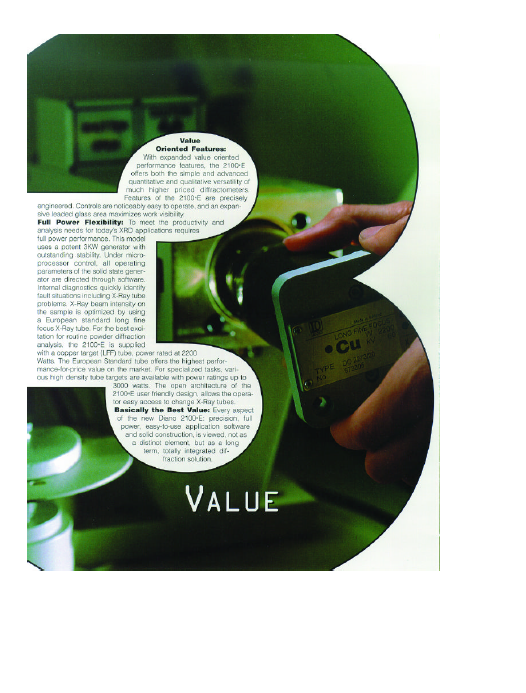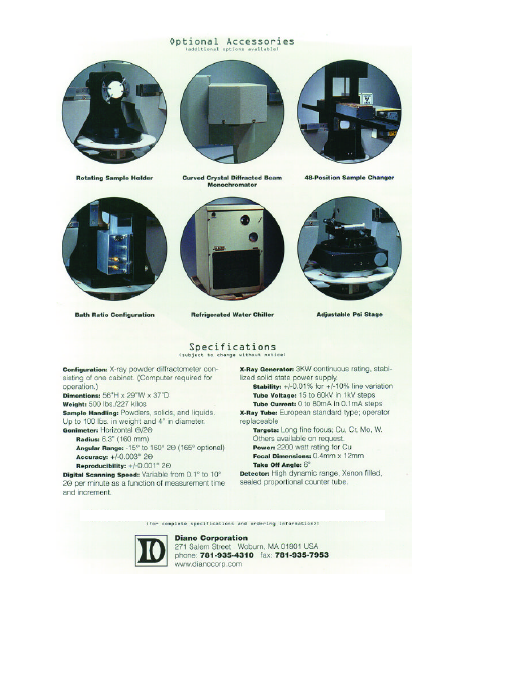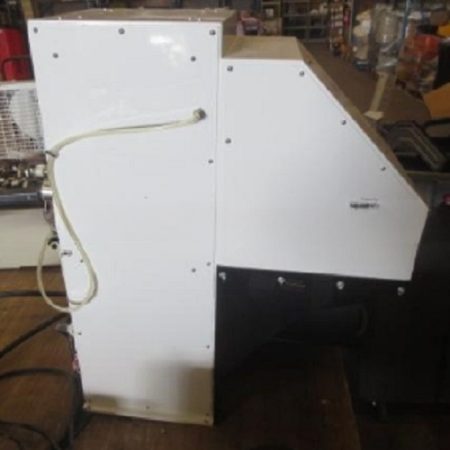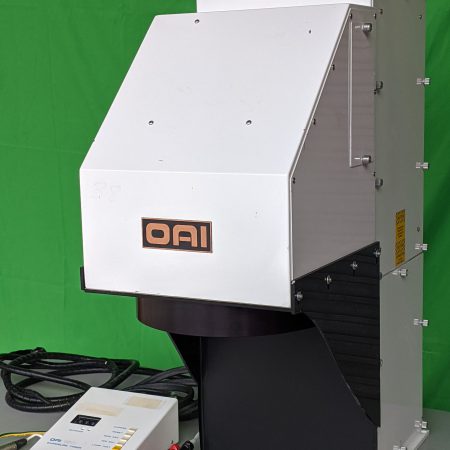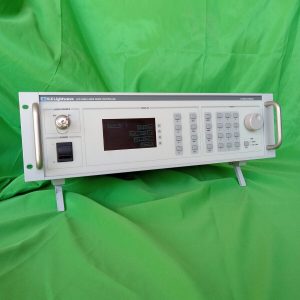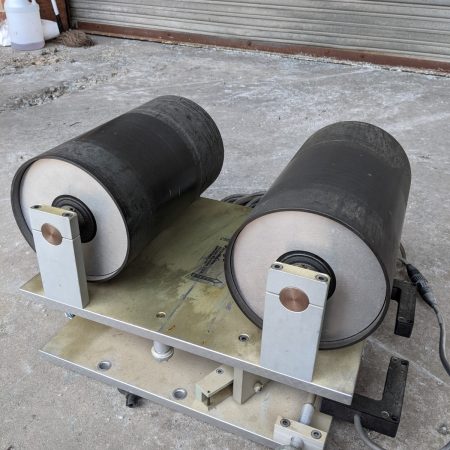Description
Manufactured by Diano, https://www.dianocorp.com/ , of Wolburn Massachusetts USA
Includes manuals and many dozens of sample holders. Excellent condition.
For software, I recommend writing your own bins using Excel spreadsheet or Open Office Calc. A tutorial is available, please email me for a copy.
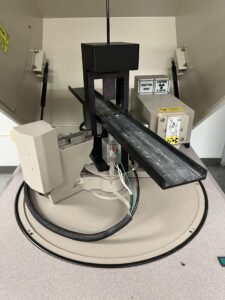
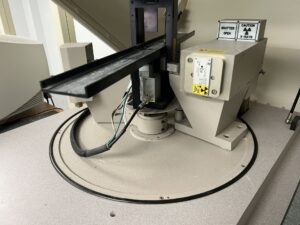
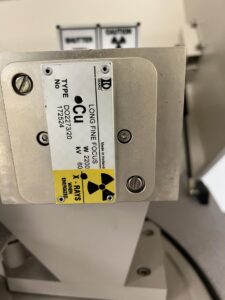
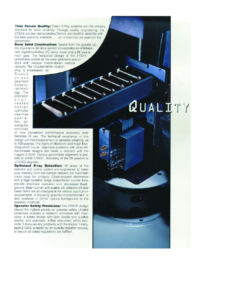
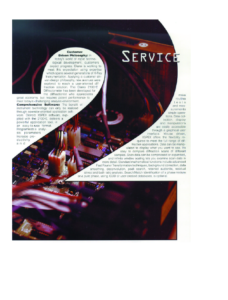
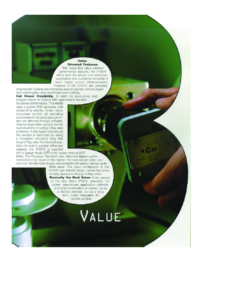
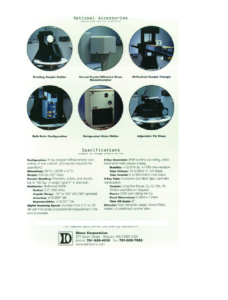
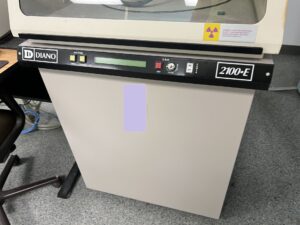

[Best_Wordpress_Gallery id=”2″]
DIANO X-Ray Diffraction systems are used in a wide variety of applications. Diffraction is one of the most powerful methods available for fundamental research, product development and production control. As a non-destructive procedure, DIANO Diffraction systems are used throughout industry, education and independent laboratories. The following list gives you a sample of the many and diverse diffractometer applications solved by DIANO today.
- Furnish a unique and unquestionable characterization of individual chemical compounds.
- Qualitative and quantitative determination of compounds in a mixture.
- Positive identification of the phases of identical chemical formula but differing in crystal structure and in physical properties.
- A non-destructive method of determining residual surface stresses in metals.
- Identification of inclusions in metals.
- Determination of the amount of retained austenite in alloy steels.
- Study of the mechanism of fatigue and other types of metal failure.
- Study of precipitation and hardening.
- Study of relations between time and temperature of anneal.
- Determination of quench and temper structures of spring steel.
- Determination of the structure of welds and the presence of strains or distortion.
- Determination of the structure and chemical changes occurring during sintering, fusing and other thermal treatments.
X-RAY DIFFRACTION APPLICATIONS
- Identification of alloy components.
- Routine determination of percentage composition of solid solution phases on the basis of measurement of line shift.
- Determination of phase diagrams of alloy systems.
- Determination of crystallite size and orientation accompanying hot or cold working of materials.
- Study of effect of grain size and composition of rolled strip.
- Determination of slip planes, fiber structure, etc., of rolled sheet and drawn wire.
- Study of zonal structure characteristics as between surface and interior structures.
- Furnishes explanation of structural failures in spinning, cupping and stamping operations.
- Measurement of the depth of cold work caused by machining, drilling, punching, grinding, etc.
- Identification of different types of synthetic rubber and differentiation from natural rubber.
- Study of chemical reactions during the vulcanization and other processing of rubber goods.
- Measurement of crystal size, preferred orientation and thickness of electro-deposited films.
- Determination between true and false hydrates.
- Study of the mechanism of catalysts.
- Determination of the mechanism of reactions and transformation in solid state at high and low temperatures.
- Identification, classification and evaluation of ores, clays and other minerals.
- Identification of substances imparting color and or opacity to glasses or enamels.
- Study of the degree of crystallinity of glass and other quasi amorphous materials.

